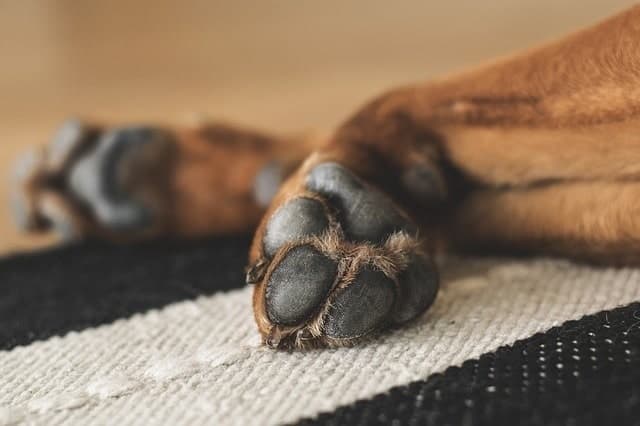Have you ever wondered about the cleanliness of your dog’s paws versus the soles of your shoes? After all, you can (and probably should) remove your shoes when you enter your home, but your dog can’t remove their pads. Turns out, your dog’s paws are much cleaner than your shoes anyway, so say Dutch researchers in a new study published in the International Journal of Environmental Research and Public Health. Interested in learning about the hygiene of a dog’s paws, researchers in the Netherlands set out to study the difference between the pads of a dog’s paws versus the soles of a human’s shoe.
Assistance dogs in the Netherlands are trained and skilled to help people with physical and mental disabilities, as well as behavioral disorders and learning disabilities. Assistance dogs also present multiple opportunities for enacting different care methods and staving off loneliness from isolation. But just over 80 percent of assistance dogs and their handlers in the Netherlands have been refused entry, at some point, to a public place, even though the law dictates assistance dogs are allowed.
Researchers from the study believe that assistance dogs and their handlers are being refused entry due to a lack of knowledge regarding assistance dogs. But a pressing reason for not allowing these dogs entrance has been based on their general hygiene. Scientists wanted to learn whether this argument had any validity.

Photo Courtesy: Amazon
Previous research has already established that a dog’s fur shows significantly lower levels of the Enterobacteriaceae family than the pads of the paws. So scientists wanted to focus on the paws. They studied the paws of 25 assistance dogs (ADs) from the Royal Dutch Guide Dog Foundation and Bultersmekke Assistancedogs, as well as 25 pet dogs (PDs). They also looked at the shoes of the 25 pet dog owners and 25 assistance dog handlers.
The researchers studied the bacteria they found on the paws and shoes. They tested for ‘typical’ hospital bacteria – the Enterobacteriaceae family and Clostridium difficile, bacteria that is usually tested for food safety and healthcare facility hygiene. C. difficile is also known to be a common cause of diarrhea in hospitals. Results from the study showed 72 percent of the dogs’ paws were negative for Enterobacteriaceae, and significantly lower in other bacterial counts than the shoes. Only 42 percent of the soles of shoes tested negative for Enterobacteriaceae.

Photo Courtesy: Pexels
“The dogs’ paws turned out to be cleaner than the soles of their shoes,” said author Jasmijn Vos, a master’s student at Utrecht University, according to U.S. News. “This makes the hygiene argument that is often used to ban assistance dogs from public locations invalid.”
Overall, the hygiene of a pet dog’s paws is better than the soles of a human’s shoes, while the paws of the assistance dogs are comparable to their handler’s shoes. Testing showed no difference between the shoes of pet dog owners and assistance dog handlers. Likewise, the paws of the pet dogs and assistance dogs showed equal hygiene.
“Looking at the human–dog couples, it became clear that, while PD paws have better general hygiene than the shoe soles of their owners, the general hygiene of AD paws and the shoe soles of their users is equal,” the authors stated in the study. The theory is that it’s because pet dogs don’t usually accompany owners everywhere like assistance dogs do.

Photo Courtesy: Pixabay
Researchers also contemplated the reasons for a dog’s paws to test cleaner than a human’s shoes. They theorized a dog’s paws may be cleaner than the soles of shoes because dogs groom on a regular basis, and people don’t typically tend to wash their shoes. Another possible reason for the discrepancy in bacteria may be the antibacterial properties in a dog’s saliva, which has been shown to contain immune and non-immune antimicrobial factors, including lysozyme and salivary peroxidase.
While this recent study makes a strong case for the true cleanliness of a dog’s paws, the study had its limitations. Scientists noted the methods used to collect the samples of bacteria from the surfaces of the dogs’ paws and the humans’ shoes were difficult to capture and compare. Measuring the different surfaces of the individual dogs’ paws – the accompanying fur, webbing, and toe and pad structure, also made it difficult to adequately compare sources. Researchers further noted the need for more studies regarding hygiene and assistance dogs.
Featured Photo Courtesy: Pixabay







